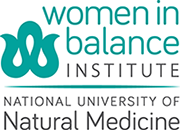I had a hysterectomy in 2011 and since then I have been having what I think is recurrent yeast infections. I have consulted with several doctors and have not received any effective treatment recommendations. Since my hysterectomy I have generally felt “out of balance”. I’m just not sure how to get back in balance.
Hoping for Help with my hoo ha
Hysterectomy, especially if the ovaries have been removed, results in sudden menopause. It is a tough transition for the body which has been used to a steady delivery of hormones from the ovaries. Women are left in a state of hormone imbalance. Many symptoms are associated with hormone imbalance, and chronic or recurring vaginitis is one of them! As menopause progresses the body will mostly adjust to the much lower levels of hormones, however, vaginal changes can still be a problem.
Causes of Vaginal Discomfort in Menopause
- Low Estrogen– estrogen helps maintain PH, keeps vaginal tissue flexible elastic, thick and moist. It also plays a role in maintaining bladder and urethral function
- Atrophic Vaginitis– symptoms include DRYNESS, itching, burning, discomfort with intercourse, watery or sticky discharge, and an elevated PH
- PH Changes– in younger women the ph of the vagina is mildly acidic. With a drop in hormones, the ph becomes more alkaline, predisposing the vagina to overgrowth of certain bacteria
- Bacterial Infection– BV or overgrowth of the bacteria Gardnerella, is more common in menopause as it thrives in a less acids environment. Symptoms include vaginal discharge, vaginal odor and can include pain or inflammation of the tissue
- Yeast Infection– yeast infections are less common in menopause, unless hormone replacement therapy is being used. Yeast seems to like an estrogen rich vaginal environment. Symptoms of yeast infection are vaginal discharge and itching. Burning and inflammation are also common. Yeast overgrowth is frequently noticed after use of antibiotics.
The first thing to find out is what type of vaginitis you are experiencing through a simple test that your health care provider can do for you. You might not have a yeast infection, but a bacterial infection. You might have estrogen deficiency which can cause itching and discomfort in the vagina. Once you know what the exact problem is, then treating it will be much easier.
Menopausal vaginal changes are best treated with estrogen replacement therapy. Providers will often prescribe an estriol cream to be used vaginally three times a week for maintenance of healthy tissue. Estriol is the weakest of the estrogens a woman’s body produces; however it is the best for vaginal discomfort in menopause.
Your general feeling of being “out of balance” is also a common symptom after hysterectomy. It might be a good idea to get your hormones tested and to be treated by a provider who can help you find hormone balance through nutrition, lifestyle, herbal medicine or bio identical hormone replacement therapy.
To find a provider who is experienced with treating hormone imbalance, use NUNM’s Provider Tool.
In health
Elise Schroeder ND
Women In Balance Institute and Portland Oregon doctor


